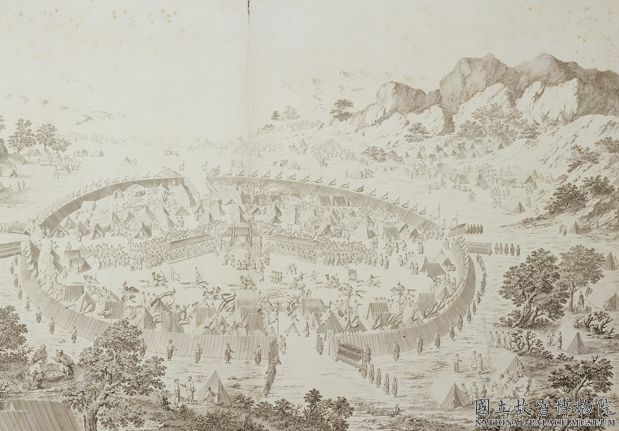[Jun Kiln rose-purple glazed begonia flowerpot]
Jun Kiln rose-purple glazed begonia flowerpot, 14.7 cm high, 23.3-18.6 cm diameter, and 8 cm foot distance
The flowerpot is in the form of begonia, with open mouth, folded edge, wide belly and flat bottom, and four cloud heads and feet. The inner wall is painted with sky-blue glaze, and the outer wall is painted with rose-purple glaze. The glaze layer is thick and moist, with obvious bubbles and brown eyes on the glaze surface, with “earthworm walking on the mud”. There are five seepage holes at the bottom, with the numerals “four” and “Chonghua Palace” (horizontal) and “Jin Zhaoyu Cuiyong” (vertical)
According to the Record of the Work Plans of the Manufacturing Office, from the eleventh year of Qianlong’s reign, the emperor began to consciously order the craftsmen of the Ministry of Internal Affairs to carve the place of furnishings on the furnishing-type Jun porcelain. Such as “(the eleventh year of Qianlong) On the 23rd day of the first month, the treasurer Bai Shixiu said that the eunuch Hu Shijie handed in two six-sided flower pots with uniform glaze… the West Warm Pavilion of the Heart Nourishing Hall; Two pieces of uniform glaze slag bucket… East Warm Pavilion of the Heart Cultivation Hall; Two evenly glazed flower pots with high stakes; Even glazed begonia basin with two pieces, garnishing the fragrant room. Keynote: The place names are engraved on each side. On the 26th of this month, Bai Shixiu, the treasurer, and Samha, the leader of the seventh grade, held the uniform glaze basin together with a sample of the name affixed to the bottom of the basin and presented it to the eunuch Hu Shijie for review. Purpose: carve the name of the earth horizontally and the small place name vertically. Thank you. ” It can be seen that after the edict of engraving was issued, the “sample of the name of the land” to be carved was designed and pasted on the bottom of the basin and sent to Emperor Qianlong for inspection. The purpose was “to carve the name of the land horizontally and the small place vertically”. From the perspective of physical objects, the palace name inscribed on the bottom of the furnishing-like Jun kiln porcelain is the “big place name”, which is horizontally carved from right to left, and the specific display location is the “small place name”, which is vertically carved at the bottom. This layout is the result of Emperor Qianlong’s own design
![图片[1]-Jun kiln rose-purple glaze Begonia flowerpot-China Archive](https://chinaarchive.net/Song dynasty/ceramics/3516.jpg)
![玫瑰紫釉海棠式花盆托-底 图片[2]-Jun kiln rose-purple glaze Begonia flowerpot-China Archive](https://chinaarchive.net/Song dynasty/ceramics/3517.jpg) 玫瑰紫釉海棠式花盆托-底
玫瑰紫釉海棠式花盆托-底
![[Qing Dynasty] British female painter—Elizabeth Keith, using woodblock prints to record China from the late Qing Dynasty to the early Republic of China—1915-China Archive](https://chinaarchive.net/wp-content/uploads/2022/11/image-191x300.png)




